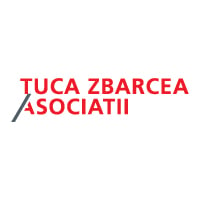

Head of legal strategy and acceleration | UiPath



Raluca Gheorghiu
Head of legal strategy and acceleration | UiPath
Team size: Over 40
How do you approach managing legal aspects during periods of instability or crises, and how does your legal strategy align with the broader business strategy to ensure the organisation’s resilience?
I don’t seek out crises, but I embrace them and view them not as obstacles, but as opportunities to demonstrate the worth of a legal team. Much like an army is unnecessary during peaceful times, a legal team truly shows its value in challenging situations.
To successfully overcome a period of instability or crisis, you are required to adopt an innovative and proactive approach in handling the root cause of the crisis. During such times, it’s critical to think outside the box, adopt an agile working model and quickly adjust to the changing circumstances, to mitigate as much as possible, and as quickly as possible, the risks and consequences of the crisis. It is of paramount importance to work closely with all the stakeholders, to ensure a holistic approach to the problem, while finding the best solution for all impacted functions, and the company.
Moreover, as a people manager, during times of instability, on top of problem solving, you need to also make sure you have clear communication with your team, informing them about the root cause of the problem and the potential risks it triggers. I think transparency helps nurture psychological safety across the team, and such an environment helps the team focus on identifying the best solution to overcome the crisis.
Our legal strategy is closely aligned with the company’s business strategy, as one of the key components of this alignment is our active involvement in the automation journey. We have multiple automations on the legal team’s roadmap, including several generative AI based processes. These innovations are designed to enhance our operational efficiency, help mitigate risks and increase compliance. By leveraging automations, we can ensure our team is not spending much of their valuable time on repetitive works, and they can swiftly respond to emerging challenges, and scale up our operational efficiency, while supporting the continuous growth of the company. This strategic integration of legal and business objectives helps us navigate crises effectively while positioning the organisation for sustainable growth.
What emerging technologies do you see as having the most significant impact on the legal profession in the near future, and how do you stay updated on these developments?
Discussing emerging technologies in the legal field inevitably leads to generative AI-based solutions. This technology has numerous applications within the legal sector, such as categorising unstructured documents – a crucial feature for companies dealing with extensive volumes of legacy contracts. We have also been developing such a solution and are almost ready to roll it out into production. Proper categorisation and renaming of all the documents are required for the integration of various other legal technologies, like contract lifecycle management tools, that can also provide auditing capabilities and better monitoring of contractual obligations.
Integrated with a chatbot, it can offer business users valuable insights into the content of contracts and other business-related documents, like company policies and processes. The technology could be trained on any materials the legal team decides to, and improve, based on users’ input and feedback.
Furthermore, this technology could also be employed to develop contract negotiation software equipped with a pre-approved clause library, enabling the efficient review of low-value and low-risk contracts, thus reducing the workload of the legal team, and allowing them to focus on the negotiation of complex and strategic contracts, or, why not, to creatively solution a crisis.
Another promising use case for generative AI in legal software is automated compliance monitoring. This involves continuously scanning and analysing changes in laws and regulations to ensure the organisation remains compliant. The AI can alert the legal team to any necessary actions, helping to mitigate risks and avoid potential legal issues. This proactive approach not only enhances compliance but also allows the legal team to focus on more strategic tasks.
The legal software landscape is rapidly evolving, making it a challenge to stay abreast of all these advancements. I strive to keep up with these developments by frequently engaging with industry publications and participating in professional networks like the Liquid Legal Institute. This continuous learning approach ensures that we remain at the forefront of technological advancements, enabling us to leverage these innovations to enhance our legal strategies and operations.
Head of legal operations and innovation (senior director) | UiPath